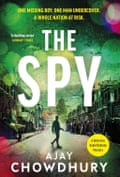
I
In 1946, a young scientist named Bernard Vonnegut discovered a significant breakthrough in atmospheric science. While it was previously known that clouds could be induced to produce precipitation through “seeding” with dry ice, Vonnegut’s research showed that silver iodide had an even more dramatic and lasting impact. The following year, Vonnegut encouraged his struggling brother to join the same laboratory as a copywriter rather than a scientist. Nearly two decades later, Kurt Vonnegut published his satirical novel Cat’s Cradle, inspired by his brother’s discovery, in which a dictator unleashes a man-made form of ice (called “ice-nine”) that causes any water it comes into contact with to freeze instantly. The novel does not have a happy ending for the planet or its inhabitants.
From the last ice age to the Anthropocene, Max Leonard’s captivating history explores the essence of ice and its role in popular culture and literature. He reflects on the diminishing presence of ice and its impact on our society. The inspiration for this book came from a moment of paradoxical realization while sitting in a pub, with ice clinking in his drink, while simultaneously watching footage of meltwater in Greenland. This sparked a desire to bridge the gap between what he saw on the screen and what was in his glass. Leonard hopes that by bringing ice into a more personal realm, we can better comprehend the loss happening in remote places. However, A Cold Spell is not a lament, but rather a tribute to human resourcefulness and adaptability. Ice, according to Leonard, is a disruptive force that evokes both fear and revelation.
Freud stated that humans have developed a general sense of anxiety due to the hardships of the Ice Age. However, Leonard suggests that this difficult period also sparked innovation and creativity. The caves in Chauvet, France, are home to some of the most well-known remnants of Ice Age society. Additionally, the era gave birth to the oldest known representation of a human, the Venus of Hohle Fels, a sculpture made from mammoth ivory 40,000 years ago.
As the glaciers have melted back, they have revealed new and interesting findings. In 1862, a mountain guide was asked to identify a body found near Chamonix, which had been preserved by the glacier for 40 years after being killed in an avalanche. He confidently identified the hand as belonging to his friend Balmat and was grateful for the opportunity to reunite with him. Over a century later, two hikers came across what they thought was another lost climber in the Ötztal Alps. However, upon further examination, it was discovered that the body was that of a Bronze Age hunter who had been perfectly preserved in the ice for over 5,000 years. The body, named Ötzi, was adorned in a coat made of sheep and goatskin, cow leather shoes, and a bearskin hat. In his hand was an axe and in his stomach, his final meal of einkorn wheat and ibex remains.
Ice exists as geography but also as commodity. For much of the 19th century, frozen lakes were lucrative sites of harvest, with businesses such as the Wenham Lake Ice Company exporting their wares across the Atlantic. In 1973, the Rand Corporation published a proposal to sail “trains” of icebergs from the Antarctic to California with the aim of supplying cheap drinking water. (When it became apparent that nothing short of nuclear power would suffice for propulsion the project was put on the back burner.)
The ability of ice to prevent decomposition and pause time had a significant impact on supply chains, leading to the expansion of nations and empires. According to Leonard, refrigerated transportation had a “colonizing force” in the western United States, transporting both meat and money. The book introduces us to a group of entrepreneurs in the ice industry, including Frederic Tudor, who sent his first shipment of ice from Boston to Calcutta in 1833. Just ten years later, he was shipping over 10,000 tons of ice from Massachusetts to India annually. Despite half of the ice melting during transport and another half being unsellable, the trade was still profitable enough for Tudor to amass a fortune.
Tudor’s dominance in the ice industry was only challenged when the technology for mass production through vapour compression was introduced. Due to the American civil war, the supply of lake ice from the north to the south was cut off, leading to the rise of ice-making factories. By 1865, there were three ice factories in New Orleans alone. Prior to this, ice had been considered a luxury item reserved for the wealthy, similar to how it was only accessible to the British in colonial India. Mark Twain once remarked that in his time, ice was seen as a symbol of wealth and only the rich could afford it.
“It’s a slippery subject,” stated English writer and traveller William Windham in 1744 upon seeing Chamonix’s Mer de Glace glacier for the first time. Leonard adds, “Windham was left perplexed.” Today, we are still just as perplexed. On the day Leonard sold his book to Bloomsbury, he discovered that he had won a cruise to Antarctica through an Instagram competition. (As mentioned in his afterword, “it may seem like I went about it the wrong way,” and his account of the trip feels somewhat added on.) The ice sheets of Antarctica and Greenland, holding two-thirds of the world’s freshwater, are melting at a rate of 420 billion tonnes per year, contributing to one-third of the global average sea level rise since 1993. Since 2000, Antarctica’s Thwaites glacier has lost 1,000 billion tonnes of ice.
Avoid the newsletter offer.
after newsletter promotion
How do these significant occurrences and their related consequences relate to things like the origins of ice skating or snow machines, or the unfortunate Ötzi with his stomach filled with einkorn porridge? Finding a way to harmonize such vast differences in size – from a small ice cube to a massive ice sheet, as mentioned in Leonard’s initial illustration – poses a major question for us. However, compiling a collection of extraordinary objects holds its own significance, and documenting what is disappearing serves as a form of advocacy.
Source: theguardian.com


